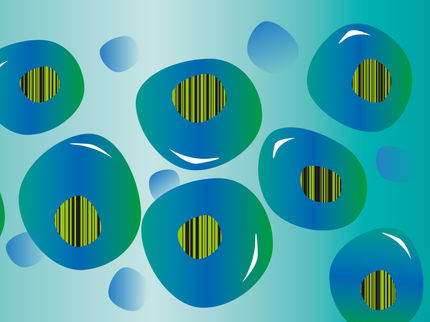Why a little is too much in intra-bone marrow transplantation in mice
Quality, not quantity
A recently published recommendation by Vetmeduni Vienna for the transplantation of hematopoietic stem cells illustrates the sort of work researchers do in order to gain new insights. The present case involves the injection volumes for intra-bone marrow transplantation in mice. Instead of the previous international standard of a 10 to 40 µl injection volume for intra-bone marrow transplantation in laboratory mice, the researchers recommend a maximum injection volume of 3 µl with the same cell concentration.

Transplantation of hematopoietic stem cells in mice: the tibia as a injection site and the subsequent concentration of transmitted cells in the lung.
© Thomas Rülicke/Vetmeduni Vienna
Contrary to previous study results, a research group led by Thomas Rülicke, head of the Institute of Laboratory Animal Science at Vetmeduni Vienna, who also conducts research at the Ludwig Boltzmann Institute for Hematology and Oncology of the Medical University of Vienna, has shown that even the previously recommended low injection volumes are clearly too high for the transplantation of stem cells in mice. Rülicke: “Our experiments have shown that even with an injection volume of 10 μl considerable amounts of the injected cells leak from the bone marrow cavity into the bloodstream and can be detected in the lung of the animals.”
Quality, not quantity
A systematic study of several mouse strains with different body sizes revealed that the injection volume and not the absolute number of transferred cells is the critical factor determining the release of injected cells from the medullary cavity. “In order to stress the animals as little as possible while saving valuable stem cells, we recommend a maximum injection volume of 3 μl for intra-bone marrow transplantation in laboratory mouse with the highest possible cell concentration,” says Rülicke.
Large cell losses with transplantation into tail vein
The new recommended injection volume is also important because the experimental transplantation of hematopoietic stem cells in laboratory mice is mostly performed by intravenous injection into the tail vein. To take up residence in the bone marrow, a process referred to as “homing”, the cells must first pass through the lung before they enter the systemic circulation. The great majority of the transplanted cells is retained in the lung and other organs, so that only a small number actually reach their destination.
The new gold standard: less than 3 millionths of a litre
Transplanting the cells directly into the bone marrow helps to avoid this loss. This method is not easy to perform in mice, however, and can only be carried out with a very low injection volume. The advantages of a direct transfer into the medullary cavity of the upper and lower leg bones in mice have been repeatedly demonstrated in the literature. The injection volumes used vary enormously between 10 to 40 μl. These are very small amounts. After all, μl stands for microlitres, which is one thousandth of a millilitre or one millionth of a litre.
Original publication
Most read news
Original publication
Dieter Fink, Ulrike Pfeiffenberger, Tina Bernthaler, Sophie Schober, Kerstin E. Thonhauser and Thomas Rülicke; "Capacity of the medullary cavity of tibia and femur for intra-bone marrow transplantation in mice"; PLOS ONE; 2019
Topics
Organizations
Other news from the department science

Get the life science industry in your inbox
By submitting this form you agree that LUMITOS AG will send you the newsletter(s) selected above by email. Your data will not be passed on to third parties. Your data will be stored and processed in accordance with our data protection regulations. LUMITOS may contact you by email for the purpose of advertising or market and opinion surveys. You can revoke your consent at any time without giving reasons to LUMITOS AG, Ernst-Augustin-Str. 2, 12489 Berlin, Germany or by e-mail at revoke@lumitos.com with effect for the future. In addition, each email contains a link to unsubscribe from the corresponding newsletter.
Most read news
More news from our other portals
Last viewed contents

New method for producing synthetic DNA - Chemically synthesized short DNA sequences are extremely important ingredients with countless uses
Paresthesia
Diclofenac
Phill_Wilson
Majewski's_polydactyly_syndrome
Synarc to Combine with Center for Clinical and Basic Research






















































